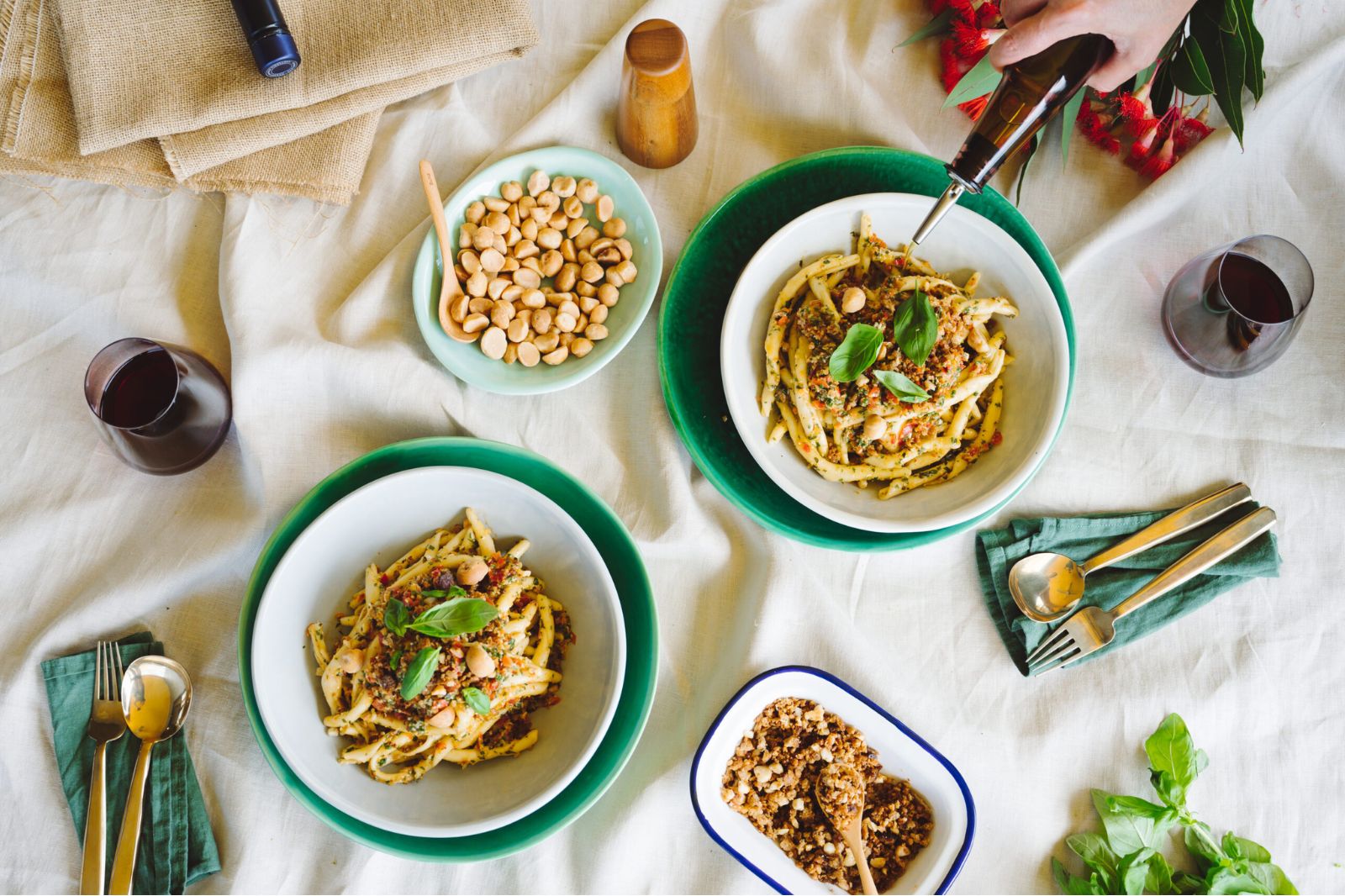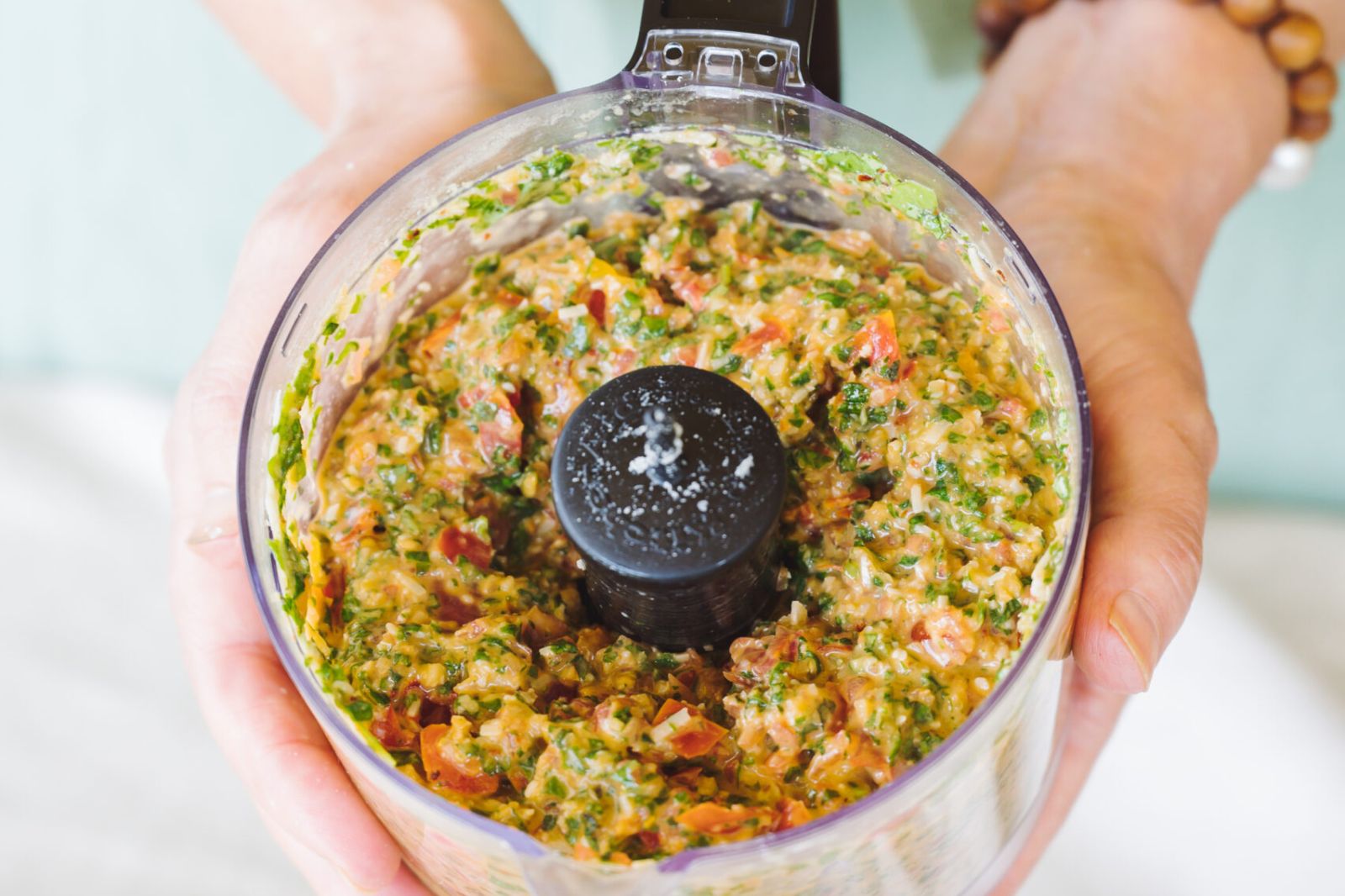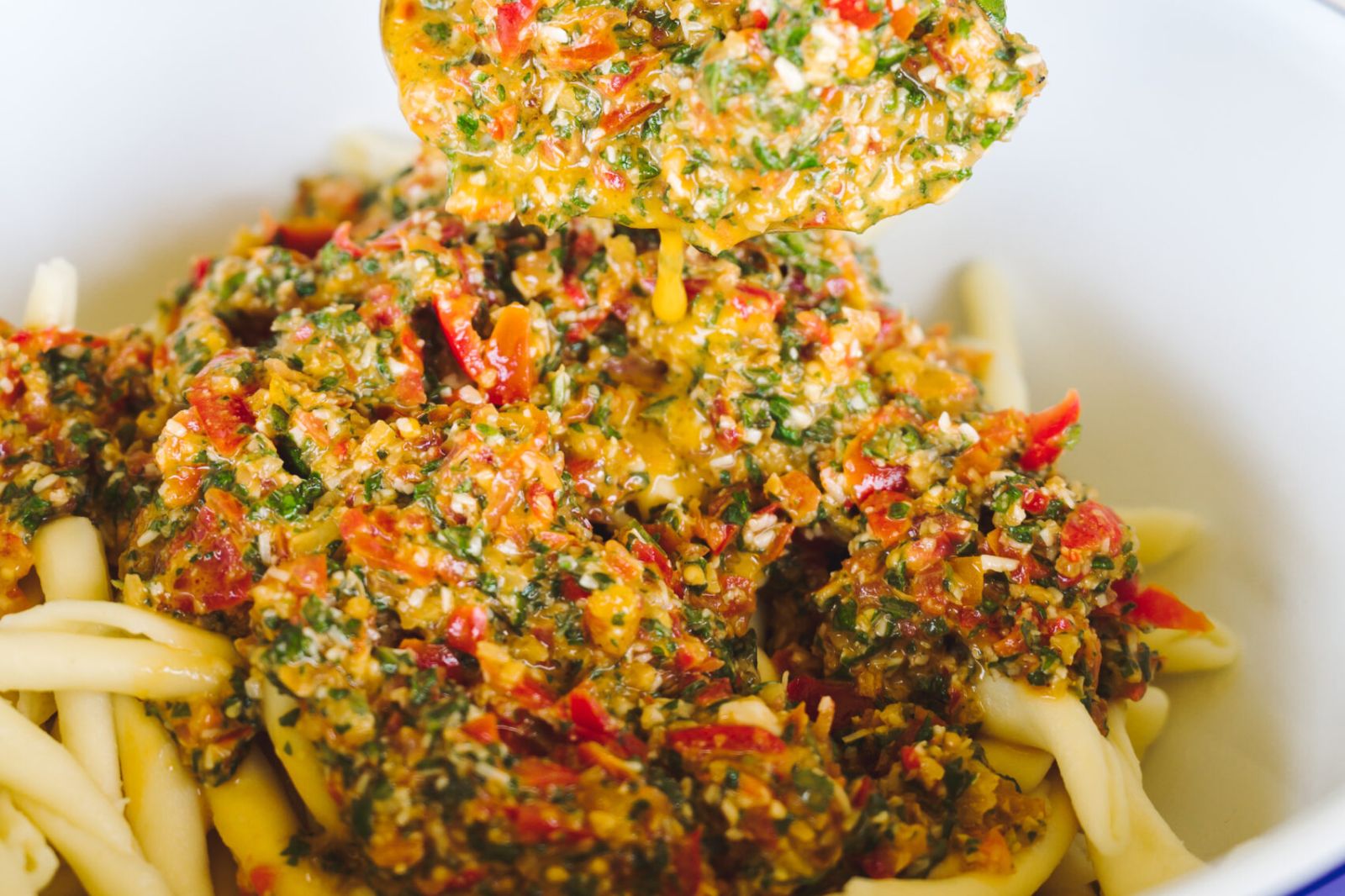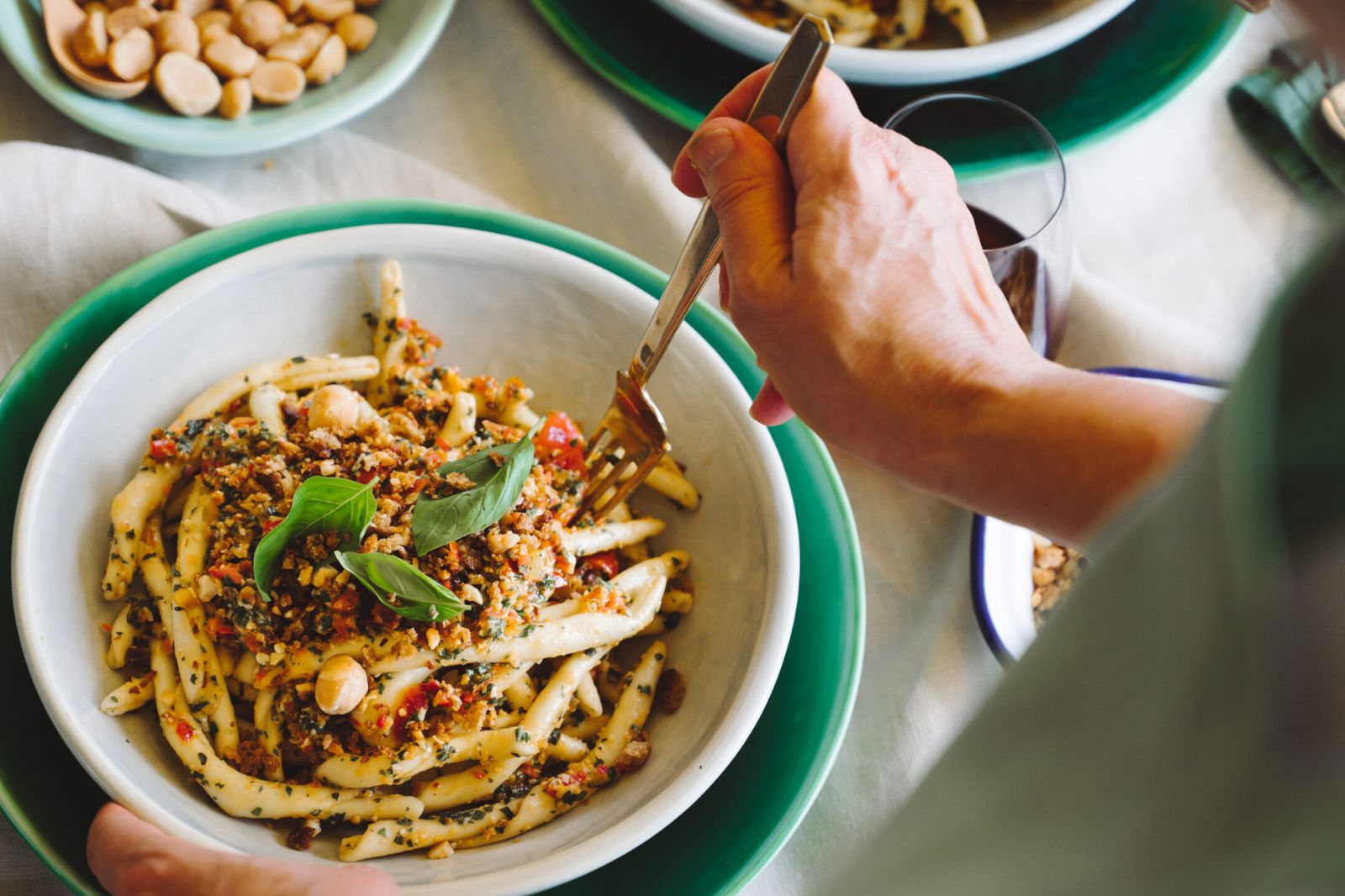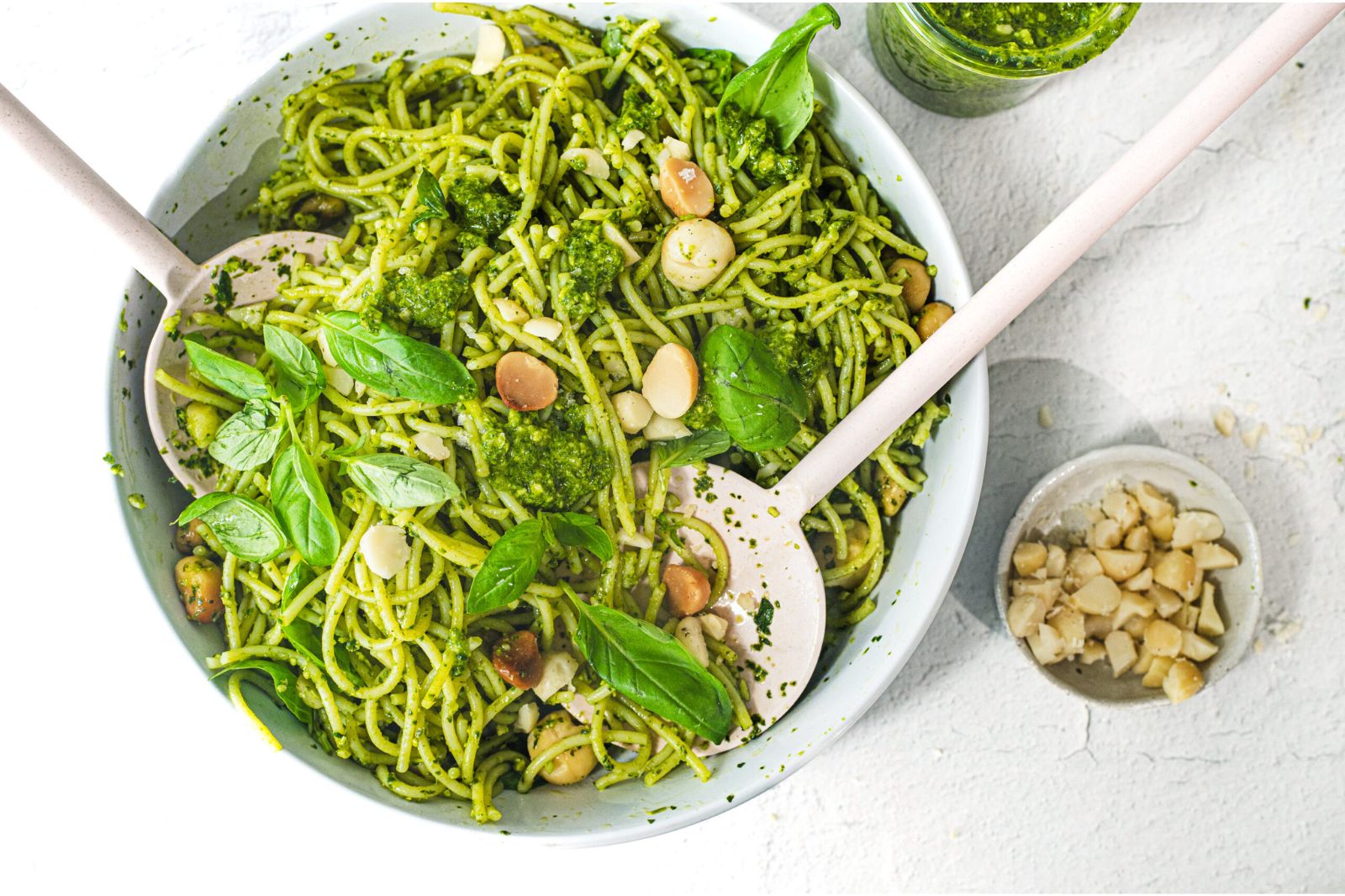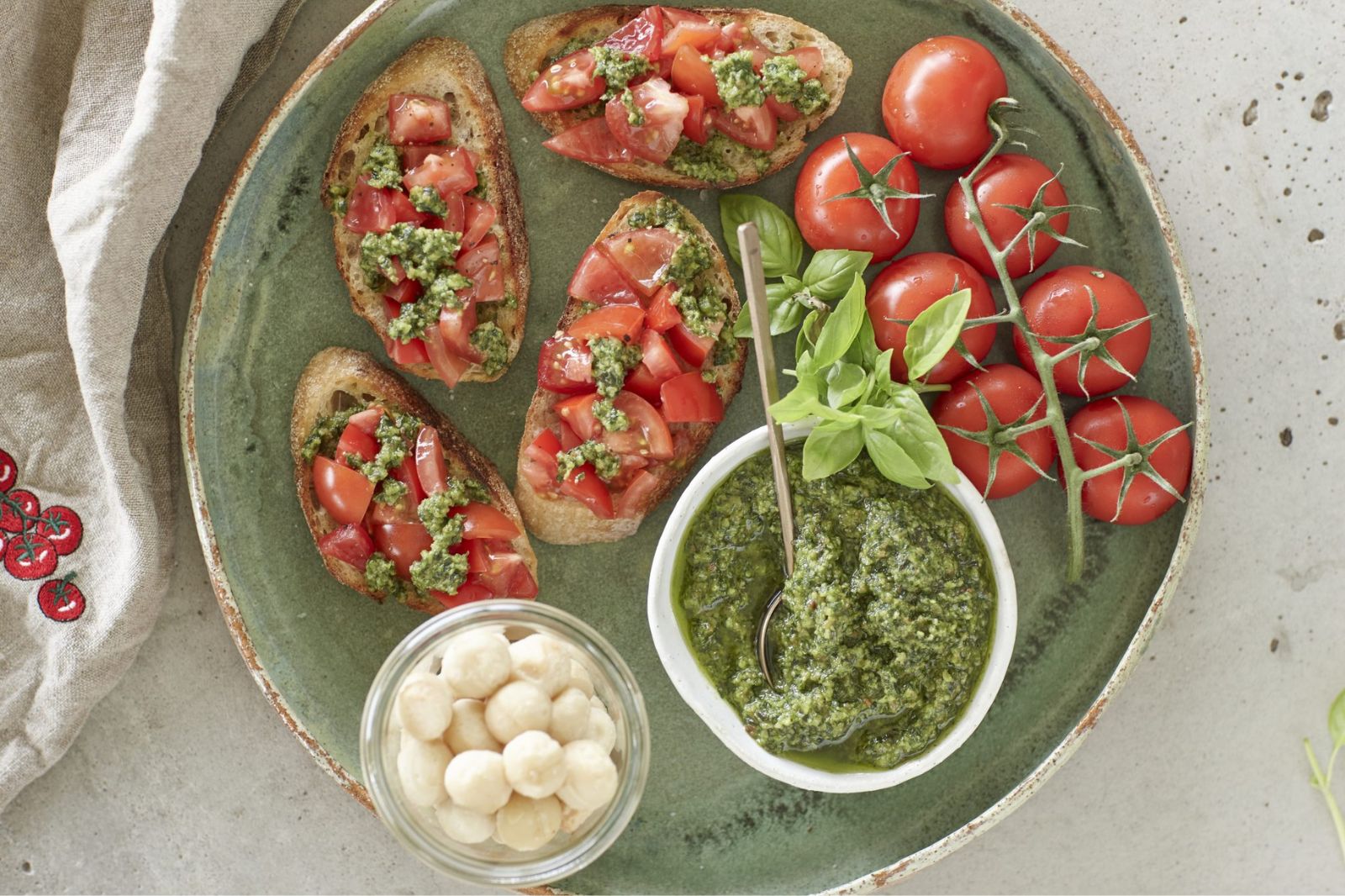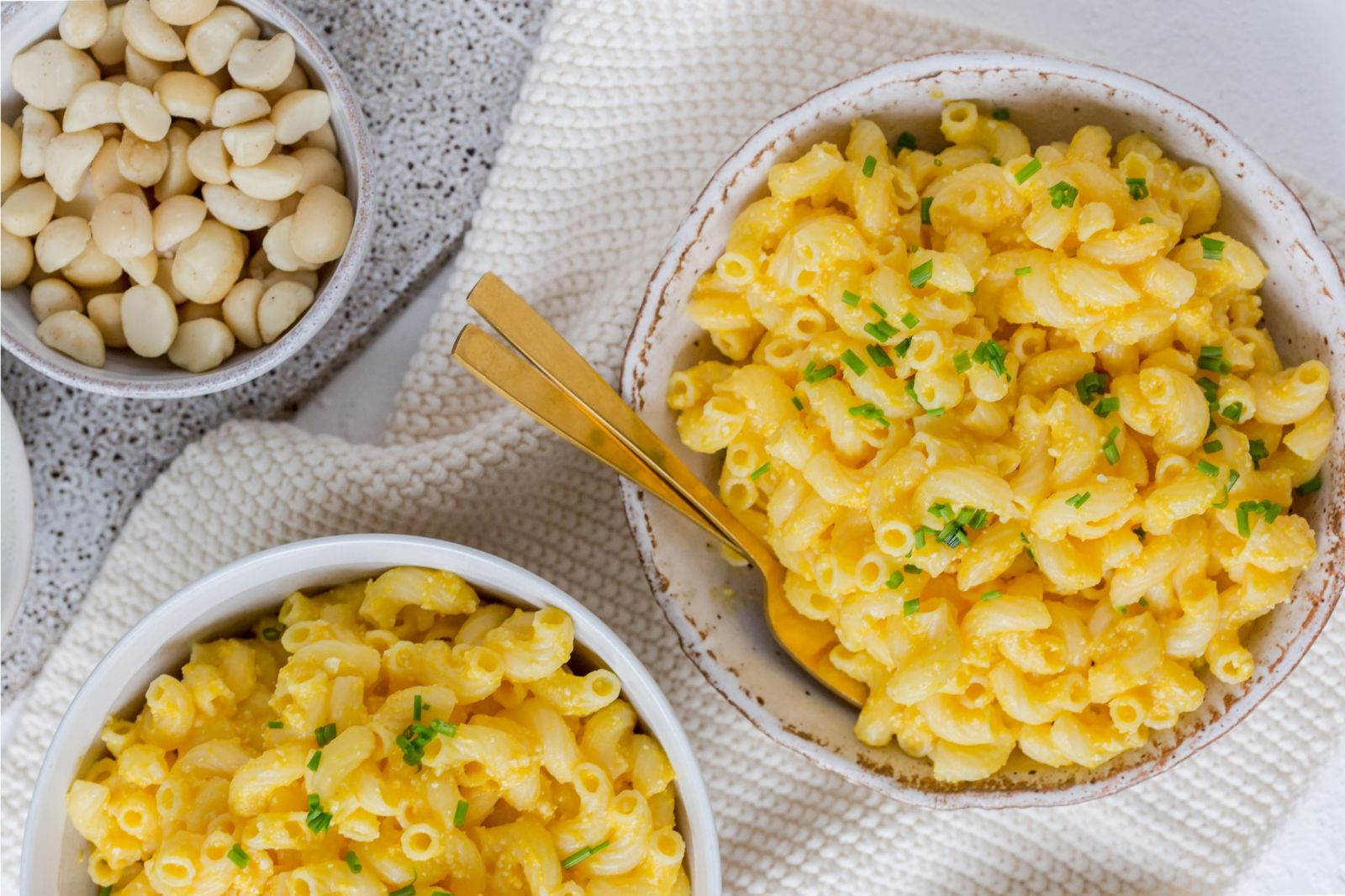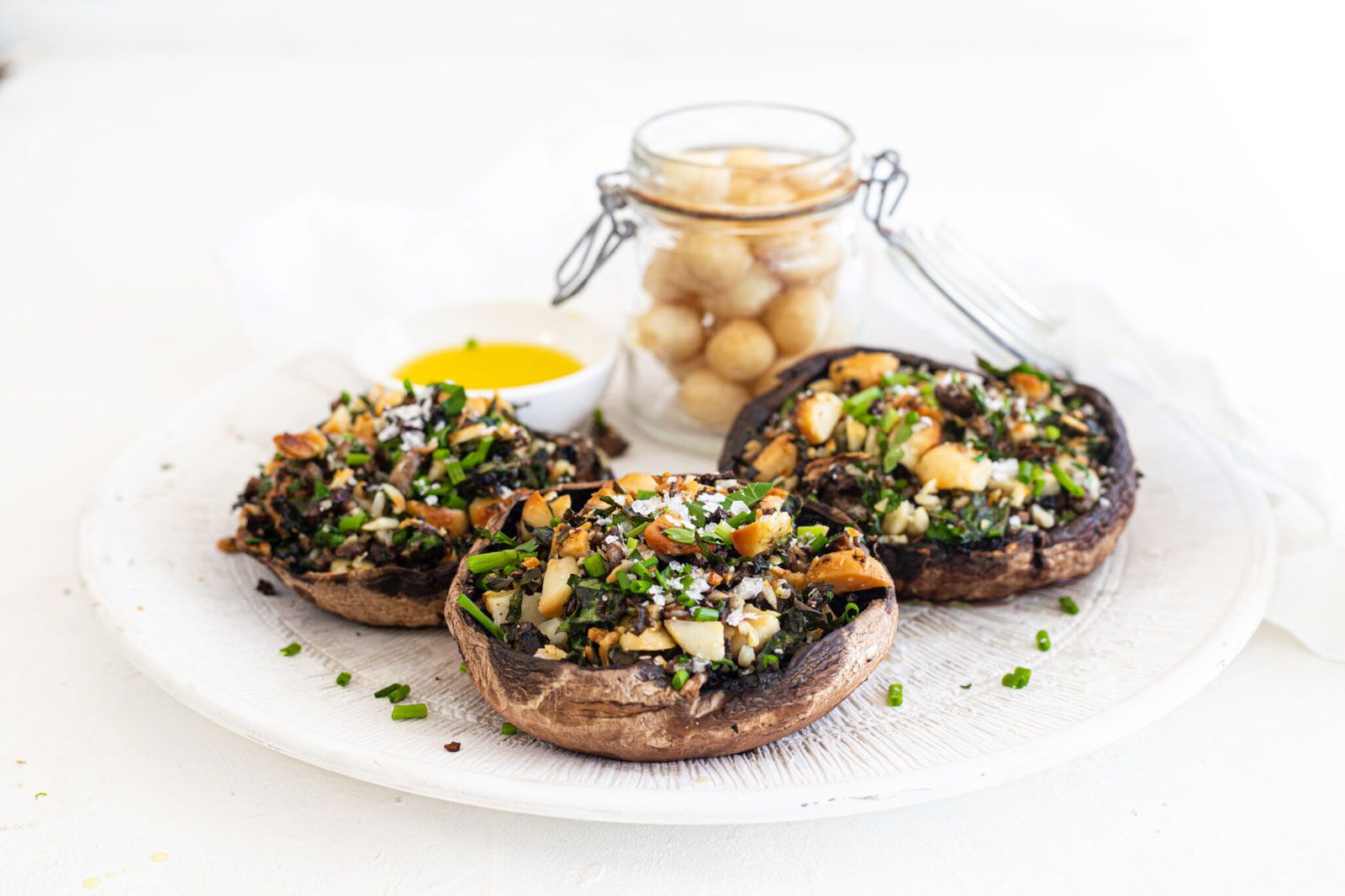Sicilian macadamia and tomato pesto (Pesto alla Trapanese)
Did you know that basil pesto from Liguria in Italy has a Sicilian cousin? It’s called pesto alla Trapanese after the Sicilian city of Trapani, and it’s made to showcase summer tomatoes.
We’ve given this pink and green-tinted pesto an Aussie twist, replacing the traditional almonds with macadamias as well as adding macadamias to the crunchy breadcrumb topping.
The no-cook sauce comes together in the food processor in the time it takes to cook your pasta, making this the ultimate in effortless summer cooking. Be prepared for an explosion of summer fragrance when the cold sauce hits the hot pasta!
SERVINGS
COURSE
- Main Course
PERFECT FOR
- Midweek Meal
- Weekend Wonder
PREFERENCE
- Vegetarian
SKILL LEVEL
Macadamia pangrattato
- 2 tbsp extra virgin olive oil
- 40 g macadamia nuts very finely chopped
- 1 cup fresh or panko breadcrumbs (60g)
- Pinch of salt flakes
Pesto
- 80 g macadamia nuts roughly chopped
- 2 cloves garlic roughly chopped
- 1 bunch basil leaves picked (about 50g)
- ½ bunch mint leaves picked (about 20g)
- ½ tsp dried chilli flakes
- 1 tsp salt flakes or ½ teaspoon fine salt to taste
- ½ cup extra virgin olive oil (125ml)
- 2 punnets ripe cherry tomatoes halved, (500g)
- 60 g pecorino cheese finely grated
- Freshly ground black pepper
Pasta
- 400 g busiate or other short pasta
Macadamia pangrattato
-
For the macadamia pangrattato, heat the olive oil in a medium frypan, add the finely chopped macadamias and breadcrumbs. Stir over medium heat until golden and crisp – about 5 minutes for panko and 10 minutes for fresh breadcrumbs. Season with a pinch of salt flakes. Set aside while you make the pesto and cook the pasta.
Pesto
-
For the pesto, toast the roughly chopped macadamias in a frypan over low-medium heat, stirring every now and then so they don’t burn, until lightly golden – about 5 minutes.
-
Add the toasted macadamias and garlic to the bowl of your food processor and pulse until the macadamias are the size of large breadcrumbs. Add the basil, mint, chilli and half the salt, then pulse until roughly chopped. While still pulsing, add half the olive oil in a slow stream until the mixture begins to form a pesto consistency. Add the tomatoes and pecorino, then add the second half of the olive oil, pulsing just until the tomatoes are roughly chopped and the pesto still has some texture.
-
Transfer to a large bowl, taste and add the other half of the salt if needed and freshly ground black pepper to taste.
-
Meanwhile, cook your pasta in plenty of boiling salted water until just al dente. Drain, reserving ½–1 cup of the cooking water.
To serve
-
To serve, stir the pesto through the cooked pasta to coat generously, adding a ladleful or two of the cooking water to thin the sauce if needed. Spoon into serving bowls, drizzle with a little olive oil, then scatter generously with the toasty macadamia pangrattato.
NOTES
- Pesto alla Trapanese is traditionally paired with a twisted pasta shape called busiate, which has plenty of nooks and crannies to catch the pasta sauce. You’ll find busiate and similar pasta shapes in most large supermarkets, but you can substitute any short pasta shape you have on hand.
- If you’d like to use less oil, you can replace some of the oil with pasta cooking water.
- Pulsing the pesto in your food processor (rather than leaving the motor running) helps to prevent the herbs from becoming too bruised and losing their bright green colour, and prevents over-processing, which can make the pesto too watery.
- The pesto also works brilliantly when swirled through minestrone soup, as a topping for bruschetta, or a sauce for grilled fish.
- Store any leftover sauce in a sealed container in the fridge for 1–2 days and bring to room temperature before using.
This recipe was created for Australian Macadamias by Andrea Ball from The Green Gourmet, a wholefoods educator who helps people rediscover the natural connection between food, health and joy. Find out more at www.thegreengourmet.com.au and @thegreengourmetco
- Calories: 1009 kcal
- Carbohydrates: 91 grams
- Protein: 22 grams
- Fat: 63 grams
- Saturated Fat: 11 grams
- Polyunsaturated Fat: 5 grams
- Monounsaturated Fat: 44 grams
- Cholestrol: 16 mg
- Sodium: 886 mg
- Potassium: 391 mg
- Fiber: 7 grams
- Sugar: 5 grams
- Vitamin A: 165 IU
- Vitamin C: 1 mg
- Calcium: 239 mg
- Iron: 4 mg


